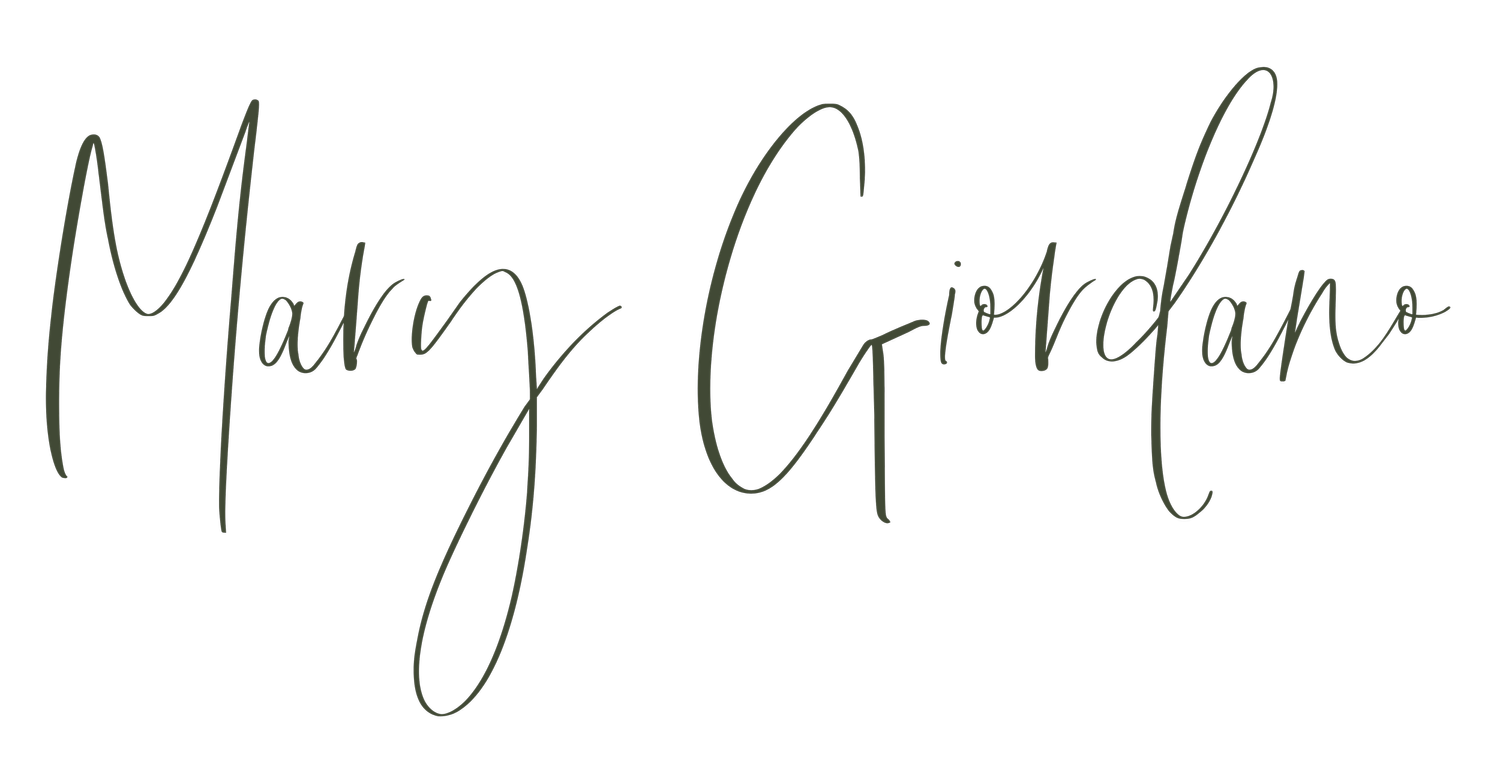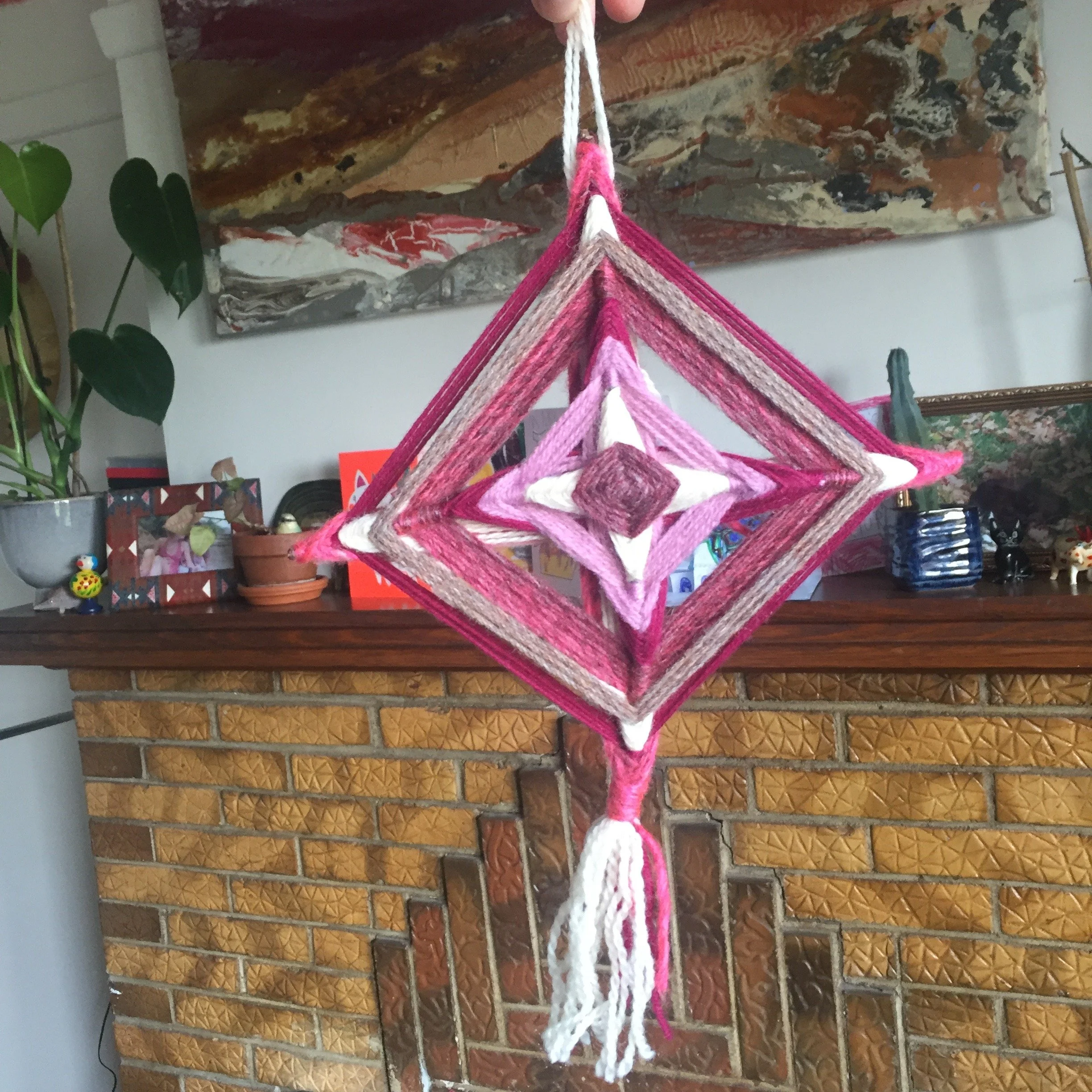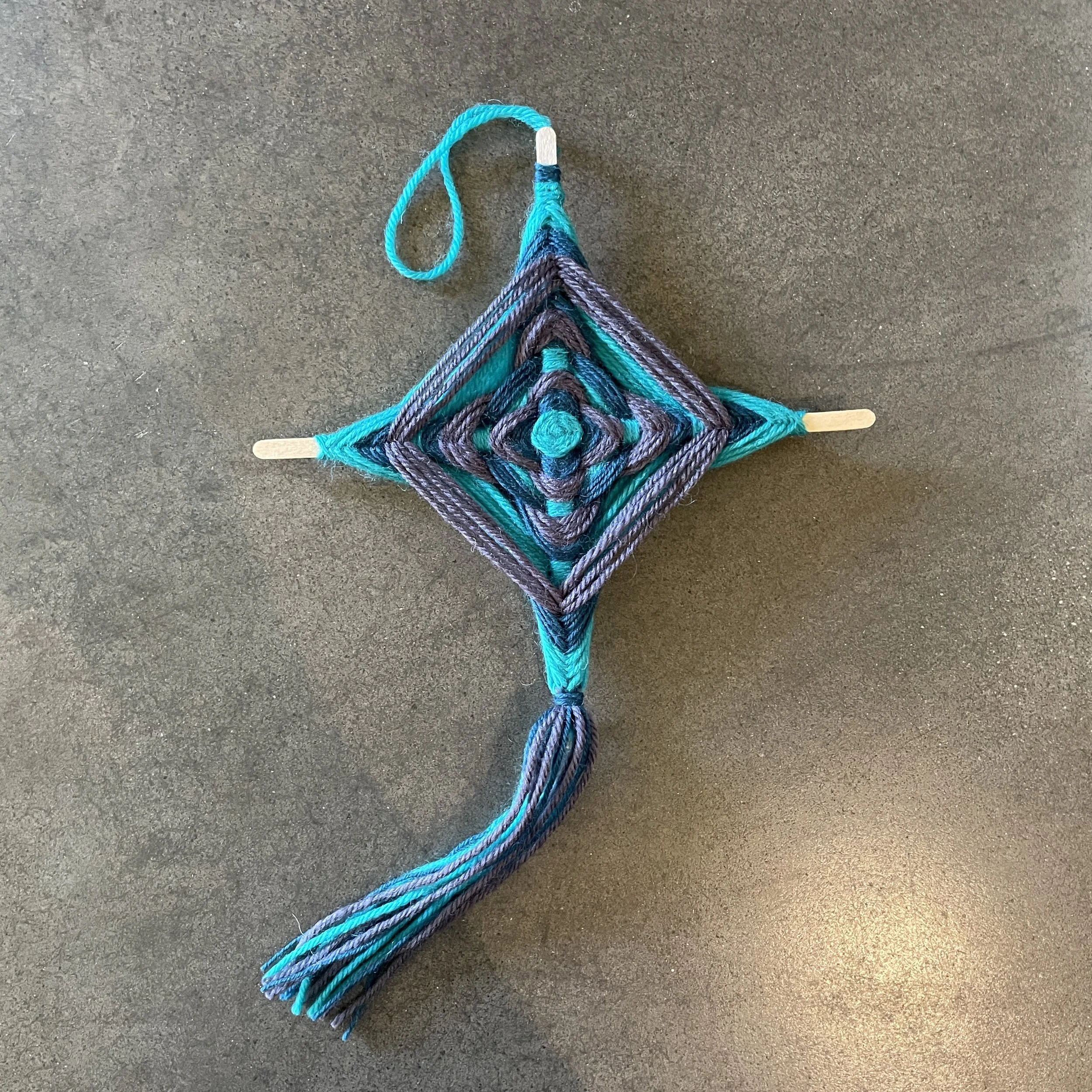Si’kulì - An ancient Huichol craft
Some time ago I did a zoom call with a fellow birth worker in Spain who also happens to be a keen crafter and who, like me, enjoys making many of the items she uses in her work herself, by hand. One of the things she had been working on, and teaching workshops in, is the art of the Si’kuli (Huichol), or Ojo de Dios (Spanish), or God’s Eye. While I was familiar with this craft, having seen it all over Mexico on my extensive and numerous visits there, and while I had even taught it to children and parents in a multicultural playgroup I used to facilitate in one of my former roles, something about the ones Irene posted about sparked an interest and curiosity in me that I hadn’t explored before.
I’m not sure if this was the intricate and multilayered design of the si’kuli’s she posted, or just the fact that this was the right time for me to delve into learning about this particular craft, but something stopped me in my tracks. Unfortunately the workshop Irene was running wasn’t offered online but she generously offered to arrange a call with me in which she could teach me more about this craft, we could talk about life and work as doulas on opposite sides of the world, and I could eventually reciprocate with another call to teach her something that I make. This second call is still outstanding but when the time is right it will happen.
Originally made by the Huichol Indians of the central Northwest of Mexico, who are widely known for their colourful crafts and their worship of the earth, the si’kuli was made as a tool for prayer and protection. The four external points represented the four cardinal directions and the centre of the weaving represented a portal to the spirit world. According to legend, when Tamatzi Kauyuma'li (a deity of creation) looked through the eye of the si’kuli they could see everything in the realms of the earth and everything in the cosmos.
It is said that from the time Huichol children are born they learn how to communicate with the spirit world through symbols and rituals. The significance of Huichol art and craft and the way they represent culture, shamanic traditions and understanding of the world through a purely oral history helps one appreciate their art and craft even more as colourful artefacts full of ancient wisdom.
When a child is born they are introduced to the gods and goddesses that will protect them during their early vulnerable years and one of the parents (usually the father) would weave the central part of the Si’kuli around two sticks to create a rhombus. After this, upon each birthday the parent would weave an additional segment onto the Si’kuli in a different colour with each colour representing something in their natural world and/or cosmos. When the child turns five and the final colour is added, the Si’kuli was then thrown into the sea in a gesture of gratitude for the protection they had received that had ensured their survival thus far. It was believed that after this point the child was able to make their own offerings and maintain their own relationship to the gods and goddesses that would protect them for the rest of their lives.
I have loved learning the history and significance of this craft so much that I have been exploring different techniques and devouring the images of the countless examples of them that I have found online. Like with many things, the techniques have changed and evolved over time and people have adopted this craft and reinterpreted it in many ways, with many styles and many elaborations in all corners of the world.
My interest in this craft might have turned into a little obsession and one that I am happy to add to my own practice by way of gifting a Si’kuli to the beautiful mothers I support. Given the symbolism of the Si’kuli as a tool to help ensure a life of health and happiness in a mysterious world full of uncertainty, and the knowledge and understanding they are said to provide while travailing the unknown, this is a heart felt gesture and offering that I incorporate to support and offer reassurance to women in line with the mother centric approach I take in my work. If desired, I can also teach new mothers and/or fathers how to make their own si’kuli for their child.
Do you have experience making si’kuli, or ojo de dios or god’s/goddess’ eye?
If so, I’d love to hear about it!
To see what other crafts and creative processes I like to weave into my birth work, head over to find me on IG @marygiordano.com.au
Sources: https://www.mexconnect.com/articles/187-huichol-indians-their-art-and-symbols/
Sol Mexico News: https://www.scribd.com/document/324656000/ojo-de-dios
Irene: https://www.instagram.com/acompanyarlavida/



